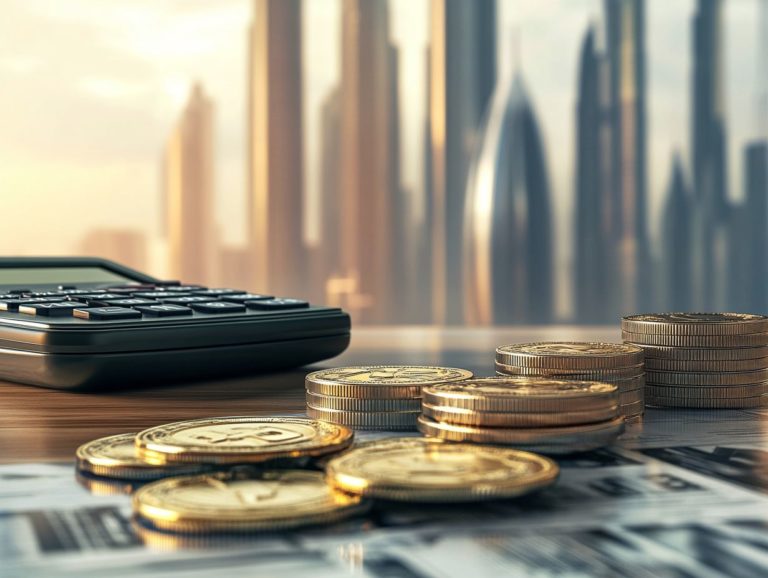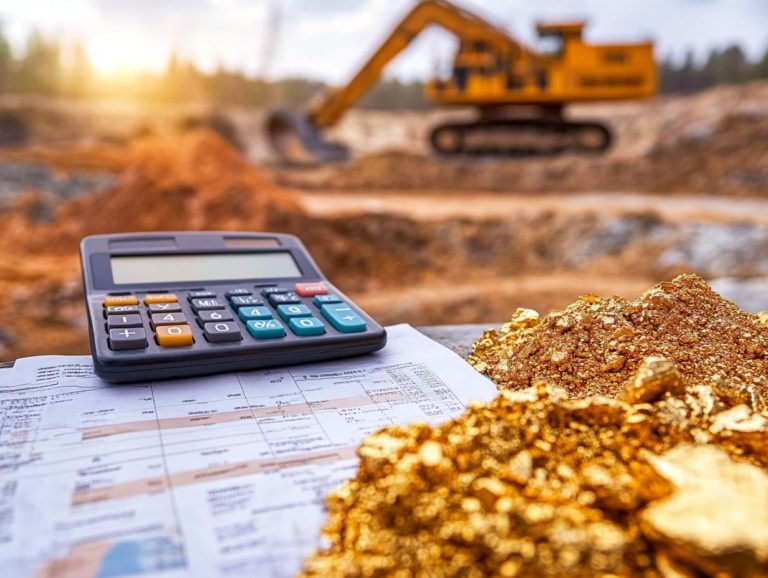The Tax Impact of Precious Metals in Your Financial Plan
Incorporating precious metals into your financial strategy can provide you with unique benefits, including diversification and a safeguard against inflation.
Navigating the intricate landscape of taxes and regulations surrounding these assets is essential for maximizing their potential.
This article delves into the role of precious metals in your financial planning, addressing tax implications, reporting requirements, and effective investment strategies. You ll also explore how to balance these assets within your overall portfolio while evaluating any associated risks.
Join in to uncover how to make informed decisions that could significantly enhance your financial future.
Contents
- Key Takeaways:
- The Role of Precious Metals in Financial Planning
- Tax Considerations for Precious Metals
- Tax Strategies for Investing in Precious Metals
- Reporting and Record-Keeping for Precious Metals
- Incorporating Precious Metals into Your Overall Financial Plan
- Potential Risks and Downsides of Precious Metals in Financial Planning
- Frequently Asked Questions
- What are precious metals and how do they impact my financial plan?
- Are there specific taxes associated with owning precious metals?
- How does holding precious metals in my portfolio affect my tax liability?
- Is there a tax advantage to holding precious metals in an Individual Retirement Account (IRA)?
- Are there any tax strategies for minimizing the impact of precious metals on my financial plan?
- What should I consider when incorporating precious metals into my financial plan?
Key Takeaways:
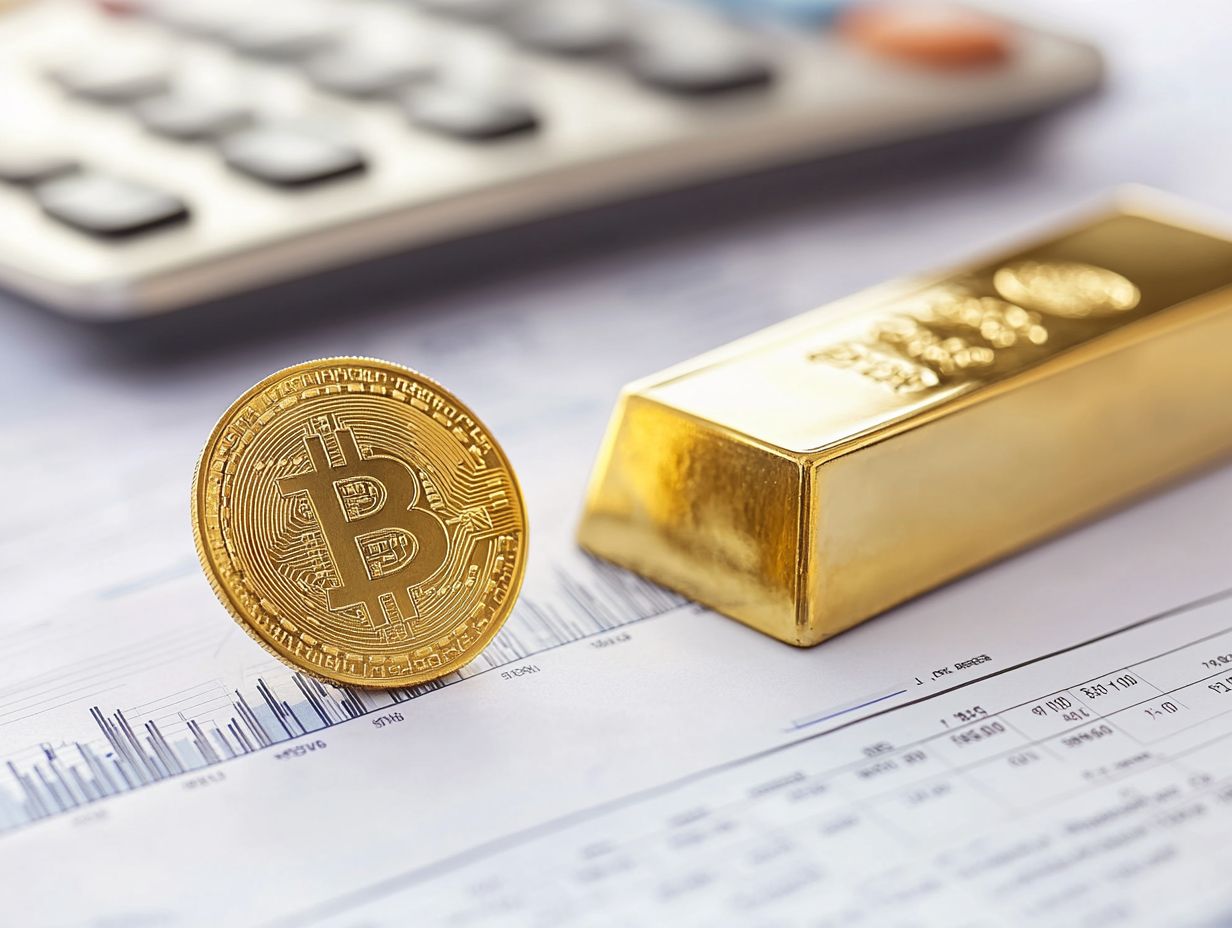
- Understand the purpose and potential benefits of including precious metals in your financial plan.
- Be aware of the different types of taxes and how they may apply to your investment in precious metals.
- Maximize tax benefits by implementing strategies like tax loss harvesting and leveraging tax-deferred accounts.
The Role of Precious Metals in Financial Planning
Precious metals, especially gold and silver, are a trustworthy type of investment, particularly during times of economic uncertainty and inflation.
Investing in these metals not only diversifies your portfolio but also secures a tangible means of wealth protection. The allure of gold bullion and silver bars, along with the advantages of a precious metals IRA, prompts discerning investors to appreciate the significance of integrating these assets into their long-term investment strategy.
Understanding the Purpose and Potential Benefits
Understanding the purpose and potential benefits of investing in precious metals is crucial, whether you re new to investing or a seasoned investor aiming for financial growth and security.
These valuable assets can offer substantial long-term gains by serving as a reliable hedge against inflation and economic downturns. Incorporating precious metals into your diversified investment portfolio enhances your wealth protection strategies.
Utilizing specific investment vehicles like ETFs or bullion can simplify your access to the market, allowing you to navigate your options with confidence. As the market fluctuates, having a stake in precious metals provides peace of mind, safeguarding your capital gains amidst volatility and ultimately boosting your overall financial resilience.
Tax Considerations for Precious Metals
When investing in precious metals, understanding the tax implications is essential; various tax liabilities can significantly impact your capital gains and overall returns.
The Internal Revenue Service (IRS) has a distinct approach to physical gold and silver investments compared to other assets, leading to specific reporting requirements and capital gains tax rates. To fully understand these nuances, check out the tax landscape for precious metals in 2024 and dive into these complexities confidently to maximize your investment benefits and minimize any tax repercussions.
Types of Taxes and How They Apply
As an investor in precious metals, it’s essential to familiarize yourself with the various taxes that may impact your investments, including capital gains tax and ordinary income tax, particularly when engaging with collectible assets.
Understanding these tax implications is paramount, as tax rates can vary based on the type of metal and its classification. For instance, when investing in precious metals like gold and silver, capital gains tax typically applies, potentially offering a lower rate if you hold the investment for more than a year. However, if your investment leans toward collectibles, such as certain rare coins, you may be subject to a higher ordinary income tax rate. It’s crucial to know what investors need to know about gold tax laws to make informed decisions.
Educating yourself on these distinctions is vital for optimizing your financial strategies and sidestepping any unexpected tax burdens. Start exploring your options today!
Tax Strategies for Investing in Precious Metals
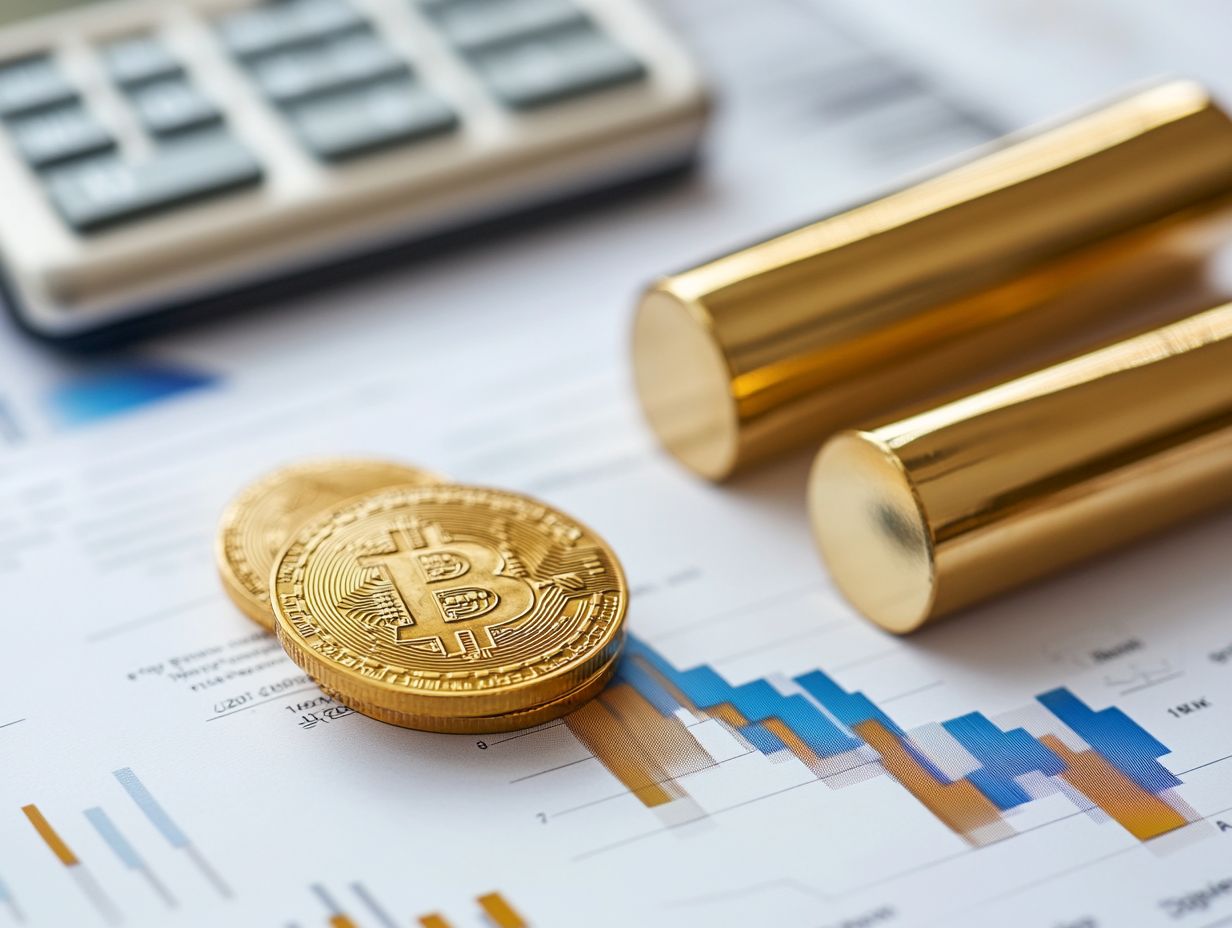
To optimize your investment in precious metals, effective tax planning strategies are essential. This approach allows you to maximize your tax benefits and potentially defer tax liability through options like a precious metals IRA.
Utilizing these strategies enhances the value of your investment and secures a more favorable financial future.
Maximizing Tax Benefits
Maximizing tax benefits requires careful planning, especially with vehicles like a gold IRA. Here, your deductible contributions can yield significant tax advantages.
These tax-advantaged retirement accounts enable you to diversify your portfolio with physical gold while enjoying the potential for tax-free growth.
Contributing to a gold IRA lowers your taxable income for the year. This is particularly advantageous for those in higher tax brackets.
While your contributions are tax-deductible, you must remember that required minimum distributions (RMDs) will kick in once you retire. This means you must withdraw a specific amount each year. Careful planning around these withdrawals can enhance your investment strategy, maximizing both your tax benefits and retirement savings.
Reporting and Record-Keeping for Precious Metals
Thorough reporting and meticulous record-keeping for your precious metals investments are essential. This helps you sidestep potential tax consequences and maintain compliance with IRS guidelines. It’s especially crucial for reportable transactions and completing Form 1099-B.
By staying organized and informed, you can navigate the complexities of your investments with confidence.
Requirements for Tax Reporting and Documentation
Understanding the requirements for tax reporting and documentation is crucial for investors in precious metals, especially regarding Form 1099-B and related transactions.
When you buy, sell, or trade gold, silver, or other precious metals, accurately documenting all taxable transactions is imperative. Form 1099-B reports the proceeds from your sales of securities and commodities.
Be mindful that any capital gains or losses from these transactions also need to be reported to the IRS.
Neglecting these reporting requirements can lead to substantial penalties, including fines and interest on unpaid taxes. This shows why keeping good records and submitting on time is important.
Incorporating Precious Metals into Your Overall Financial Plan
Incorporating precious metals into your financial plan can greatly enhance your investment opportunities. They serve as a robust hedge against economic uncertainty and inflation, while also enhancing the diversification of your portfolio.
Tips for Balancing Precious Metals with Other Investments
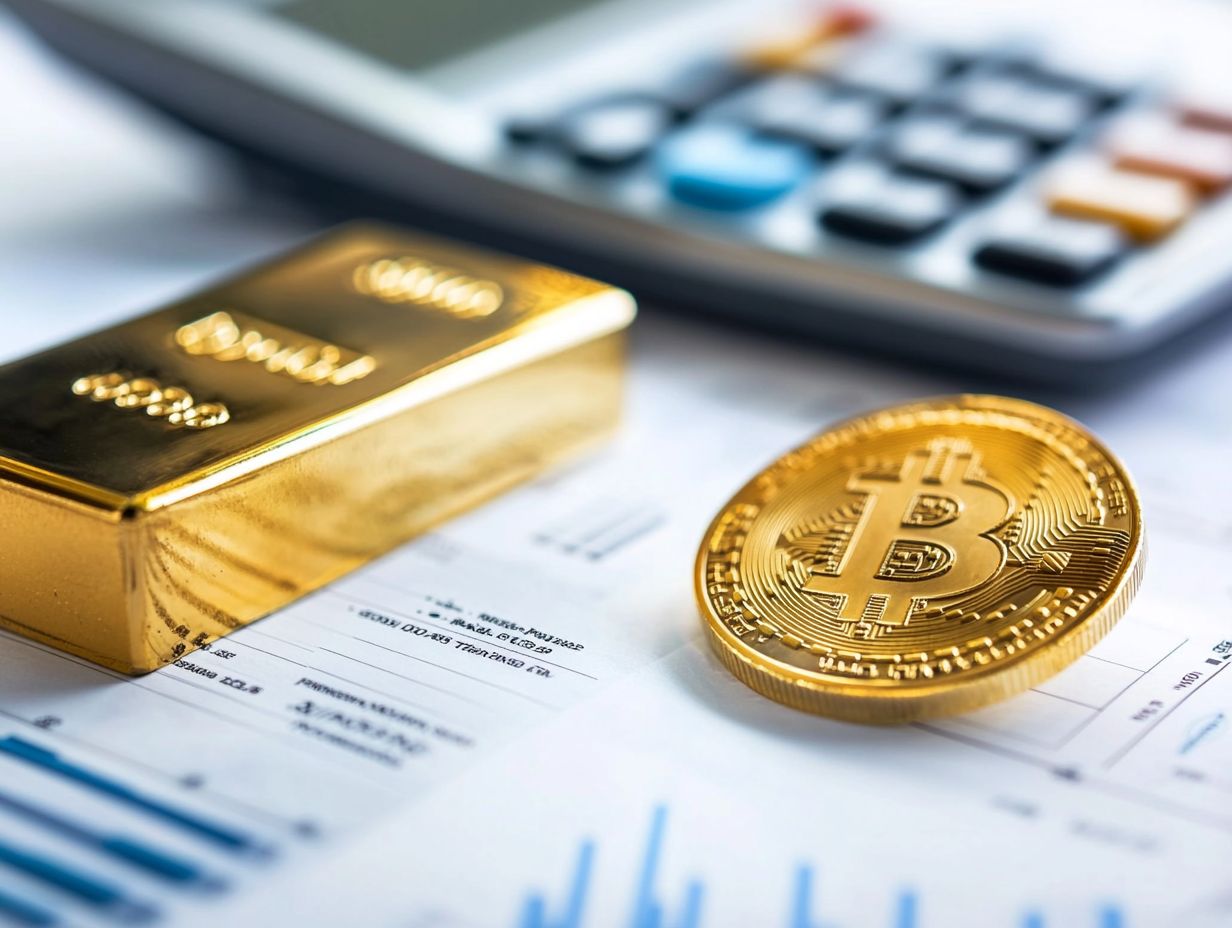
Balancing precious metals with your other investments is essential for crafting a diversified portfolio aimed at both growth and wealth protection.
When determining the right balance, consider the unique characteristics of precious metals and their historical role as a hedge against inflation and economic uncertainty. A thoughtful approach involves allocating a portion of your overall portfolio to precious metals while also investing in equities, bonds, and real estate to seize growth opportunities across varying market conditions.
Regularly reviewing and rebalancing your portfolio ensures it remains aligned with your long-term investment goals. This helps to mitigate risks associated with concentrating too heavily in one asset class.
Employing dollar-cost averaging for your metal purchases can enhance your strategy, enabling steady accumulation over time.
Start investing wisely today!
Potential Risks and Downsides of Precious Metals in Financial Planning
While investing in precious metals offers various advantages, it s crucial to acknowledge the potential risks and drawbacks that may affect your financial strategy.
These include the unpredictable nature of market values and the ongoing costs associated with storage.
Assessing and Mitigating Potential Risks
It’s crucial to assess and manage risks when investing in precious metals. This is especially true during economic uncertainty, which can threaten financial growth.
To navigate this intricate landscape effectively, you should employ various risk assessment techniques. Diversifying across different metal types and geographical regions can significantly reduce your exposure to changes in market prices.
Staying informed about market trends is equally important. Fluctuations in supply and demand, along with global economic indicators, can profoundly impact prices.
Monitoring regulatory changes ensures that you remain compliant and avoid unforeseen penalties, ultimately safeguarding your investments.
By integrating these strategies, you can position yourself to capitalize on opportunities while minimizing potential setbacks in the ever-evolving market.
Frequently Asked Questions
What are precious metals and how do they impact my financial plan?
Precious metals are rare and naturally occurring elements that hold significant economic value due to their scarcity and various uses in industries such as jewelry making, electronics, and investment.
The tax implications of these metals in your financial plan refer to the tax consequences of buying, selling, and holding these assets, as detailed in the tax impact of precious metals in your financial strategy.
Are there specific taxes associated with owning precious metals?
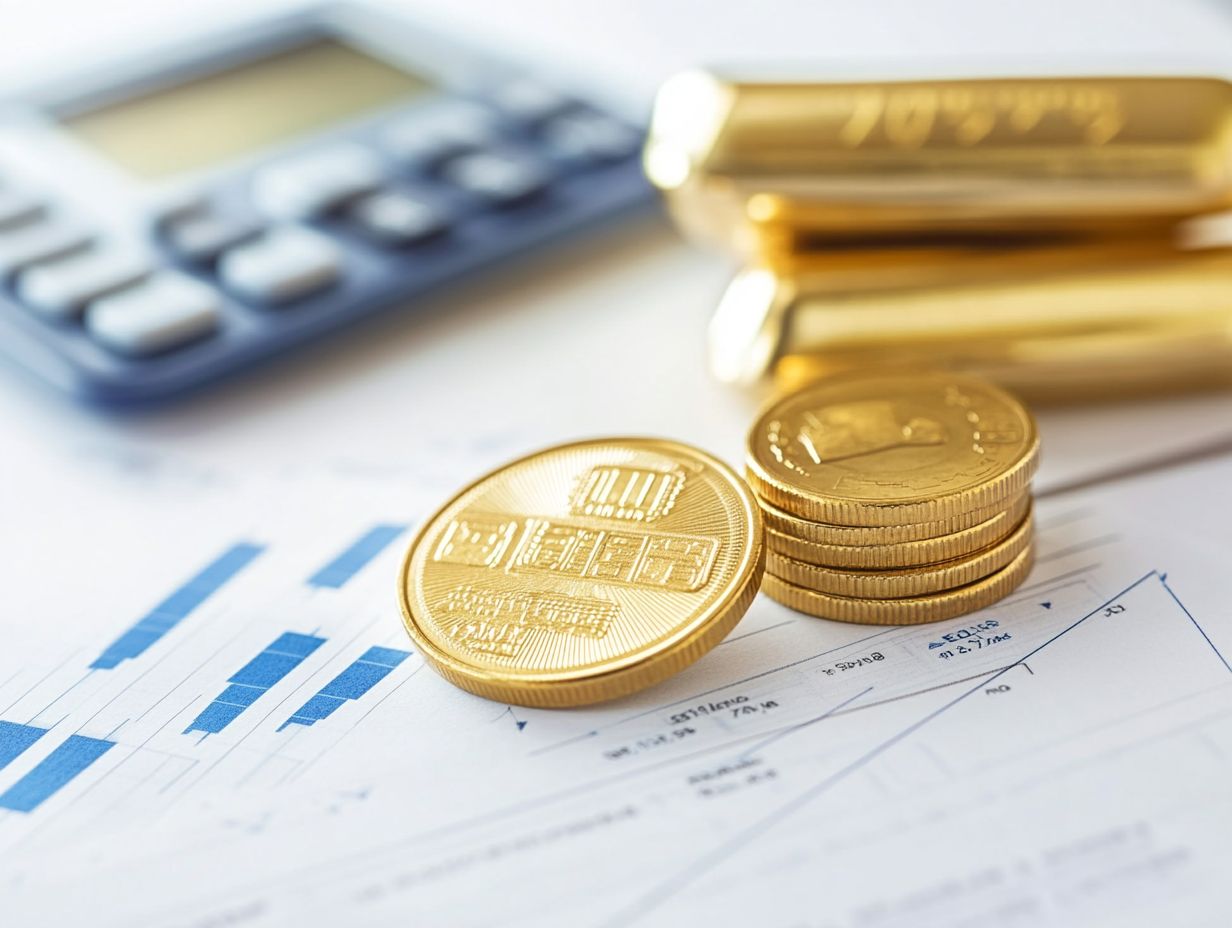
Yes, different taxes may apply to precious metals depending on how they are acquired and used. For example, when purchasing physical metals like gold or silver, sales tax may apply based on your state.
Additionally, capital gains tax may be triggered when selling precious metals for a profit.
How does holding precious metals in my portfolio affect my tax liability?
Holding precious metals can have tax implications depending on their classification. If held as collectibles, such as rare coins, taxes may be higher on gains compared to if classified as investment assets.
It’s crucial to consult a tax professional to understand the specific tax impact on your individual portfolio.
Is there a tax advantage to holding precious metals in an Individual Retirement Account (IRA)?
Yes, there can be tax advantages to holding precious metals in an IRA. An IRA provides tax-deferred growth, meaning you won t pay taxes on any gains until you withdraw funds.
Some types of IRAs offer tax-free growth, providing a tax-free way of holding precious metals.
Are there any tax strategies for minimizing the impact of precious metals on my financial plan?
Yes, several tax strategies may help minimize the impact of precious metals on your financial plan.
For instance, if you plan to sell precious metals for a profit, consider selling them in a year with lower income to reduce capital gains tax. Additionally, understanding tax regulations for precious metals investors can provide insights on how holding precious metals in a tax-efficient account, like an IRA, can also help minimize taxes.
What should I consider when incorporating precious metals into my financial plan?
When incorporating precious metals into your financial plan, you must consider the tax implications to maximize your benefits. Additionally, evaluate the overall risk and diversification of your portfolio.
Precious metals can provide a hedge against inflation and market volatility. However, it s vital to understand the potential tax consequences and weigh them against your overall financial goals.










